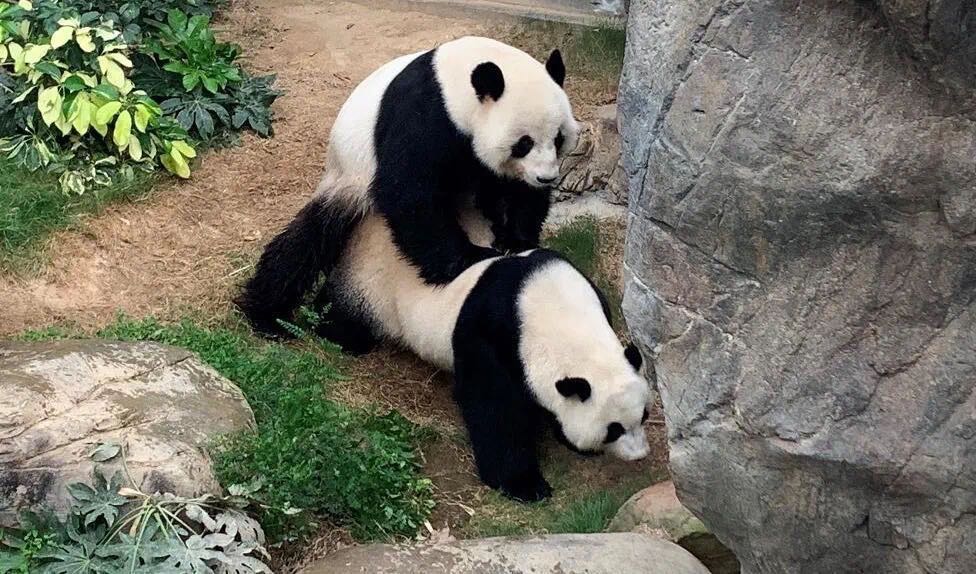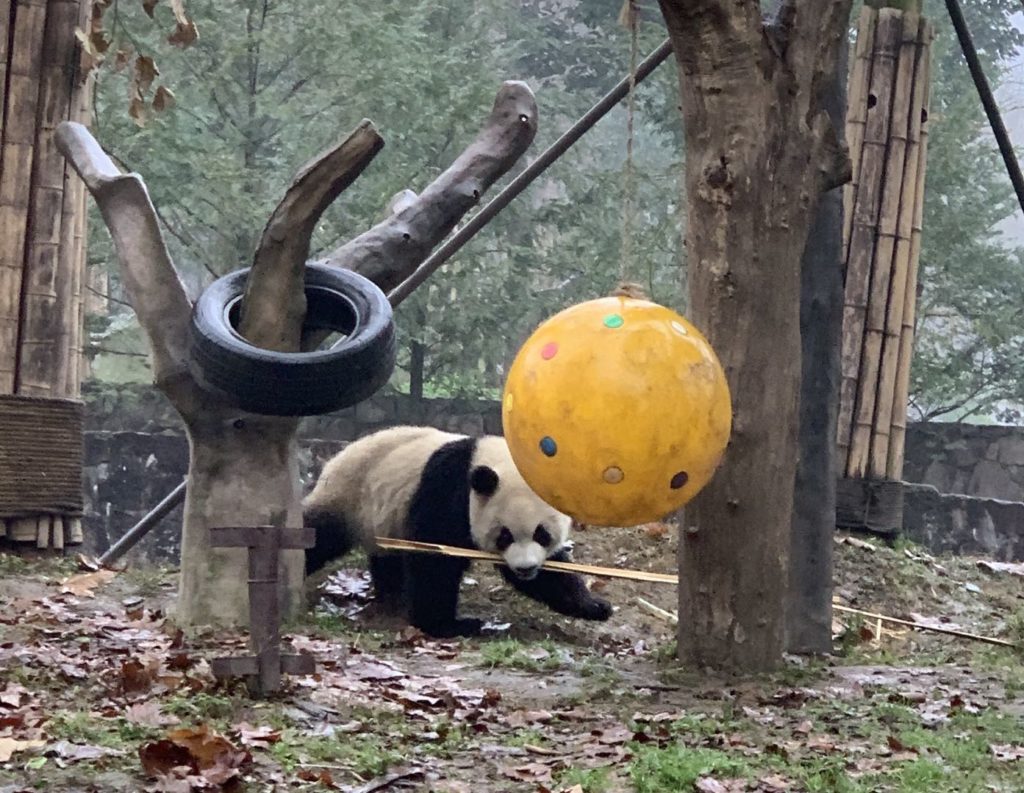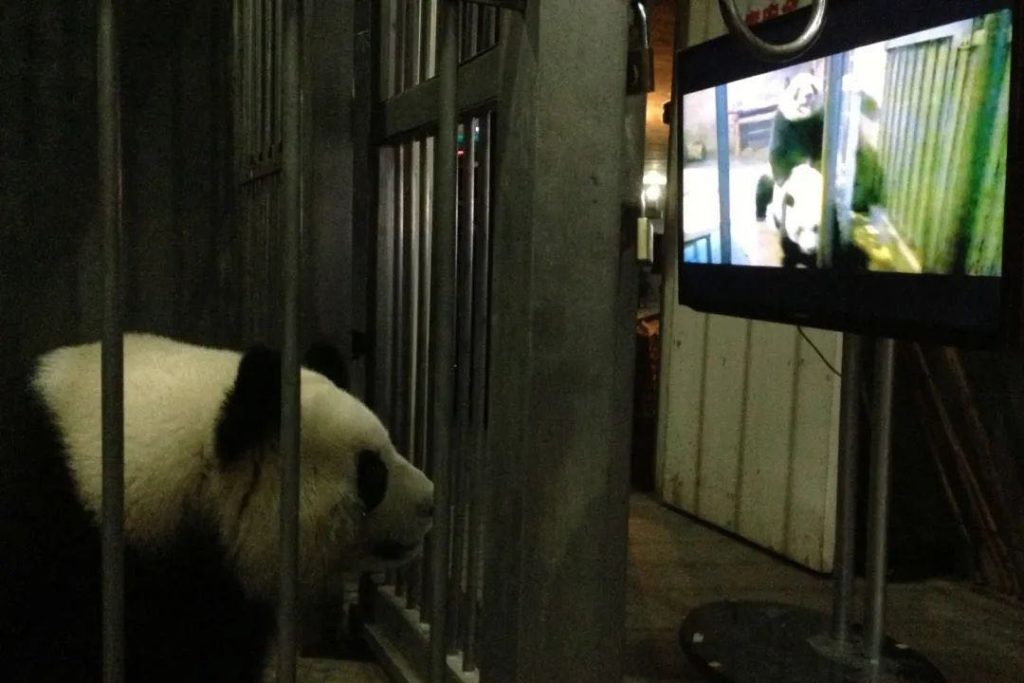Mating deference between captive pandas and wild pandas
Originally by Nexus Feng 04/16/2020
It took over 9 years to succeed. Why is panda mating so difficult?
On April 6, 2020, the Hong Kong Ocean Park announced the successful natural mating of the two Giant Pandas in the park. "Yingying" and "Lele" ‘s pregnancy has been attempted since 2011 but has never been successful. “The giant Panda finally mates successfully", the good news even floated across the ocean, appearing on “The Daily Social Distancing Show”.


Everyone’s perception surrounding Panda Mating has always been one of "difficult births" - pandas have difficulty mating, resulting in a low reproduction rate of pandas. This has led to another urban legend: the low reproduction rate of pandas has caused the number to continue to decrease, so it has become a treasured animal. Is this how it really is?
Why is it so difficult to mate a captive Giant Panda?
Since the Beijing Zoo first realized the breeding of pandas in captivity in 1963, many zoos also have their own Giant Panda babies. However, under captive conditions, the reproduction of giant pandas is indeed very difficult.
Reason 1: Uncomfortable living environment
Just as if people change their living environment and they will start off as unadjusted, "being in captive" changes the living habits and living rules of animals themselves. Animals feel uncomfortable and this will inevitably have an impact on animal behavior.
Reason 2: Captive pandas have poor physical fitness
Mating and reproduction are a very tiring thing for animals, taking a year or even years of nutrition in order to enter the estrus period. Only then can the mating period be at its peak.

But pandas in captivity, especially male pandas, have poor physical fitness. This directly leads to the existence of two problems.
For large animals that walk on four feet and for them to stand up on two feet and crawl on top of the female panda, and then for them to make mating movements, and finally end with ejaculation, they are all already very difficult. To complete these movements continuously for individuals with small amounts of exercise and poor physical fitness is nearly an impossible thing.
Secondly, if the male panda has poor physique, it will affect other body functions, resulting in poor sperm quality, insufficient vitality, low number. Even if it can be mated successfully, the tadpoles may not be able to complete their mission.

The daily exercise of wild pandas is very large. In order to find food, they may walk tens of kilometers on steep mountain roads. However, the captive panda activity area is very small, with most of them being flat. Although some institutions have arranged climbing frames and rocks for pandas, the amount of panda exercise in this environment and the wild environment are still limited.
Panda’s difficulty to communicate their love
Pandas with artificial sperm raising and artificial child rearing will become physically worse. Mating is a social activity. In order to improve the survival rate of panda babies, a considerable number of pandas are artificially inseminated and are taken away from their mothers after birth, and then released by artificial breeders. Pandas grown up in this environment may have problems when communicating with their peers and will not cause or respond to the love of each other. This leads to female pandas unwilling to cooperate during mating and makes it hard for difficult for male pandas to insert. British zoologist Lucy Cook also put forward a similar view in the book "The Truth About Animals”.
In the 1980s, researchers found that under wild conditions, female pandas would crawl on the tree to call, and several male pandas compete for their attention under the tree, with the lucky male panda completing mating.
However, in captivity, most of these situations become "arranged marriages" decided by the managers of the zoo. The two pandas do not call each other like they do in the wild.
In addition, the disturbance of tourists may also be a reason for the panda's breeding difficulties. For an animal living in a bamboo forest in the mountains and living the life of a hermit, the hustle and bustle of hundreds of blue star bipeds may cause a lot of pressure and cause the pandas to be reluctant to mate. The two pandas in some Hong Kong Ocean Parks have only had children born after 9 years of trial. However, after the closure of the Hong Kong Ocean Park due to the pandemic, the good news of successful mating came out and may be related to the lack of tourists suddenly.
The wild panda is very strong
As mentioned above, captive pandas have a “difficulty to mate”. Is it true that the panda species themselves has had a genetic a problem and should have be eliminated by Nature through Evolution? I don’t believe so. According to Henry Nichols, author of "Gifts from China: A Hundred Years of Giant Panda and Human Encounter", Giant Pandas are not a weak species: "They have existed for millions of years. It's a little longer than modern humans. The panda’s way of sex is indeed different from ours, but there is no reason to think that their breeding methods will be more effective than our accumulation.”
Many scholars have observed that wild pandas are strong, agile, sensitive, and breeding is not difficult for them. Lucy Cook also wrote in the book that "male pandas can mate with female pandas in an afternoon up to 40 times”. If a panda is really a lazy animal and has a difficulty to reproduce, they should have been eliminated through evolution many times." Therefore, it is because of captive conditions that makes pandas difficult to mate and breed.
What to do in captivity
In order to solve the problem of captive pandas' mating and breeding difficulties, the breeders racked their brains and tried various methods.
The first is to improve the environment of captive panda cages, arranging the sports ground, providing panda sanctuaries with rocks, perch, trees, and other objects for observing and climbing, laying a reasonable slope in the sports ground, and increasing the pool dramatically. This design is designed to allow the panda to avoid the places where visitors are watching when the pressure is too high, and to have a similar “home” closer to of the native environment.
Furthermore, a specific "menu" is provided for pandas so that the ratio of "food" is more scientific, continuing with the frequency of feeding changing as well. In the past, zoos tended to feed at a fixed time, but the time for wild animals to eat was not fixed - when to eat and how often they ate; some zoos simulated these characteristics to restore the living conditions of wild animals.
In addition, the zoo breeders plan on teaching the panda cubs how to "socialize". The breeders will let the panda babies understand how to interact with their own kind through various methods. One of the most famous is to show pandas pornography. Let’s also look at one of the most surprising photos of 2013 selected by Time magazine. The photo depicts what happened at the Giant Panda Breeding Research Base on March 10, 2013, where the five-and-a-half-year-old female "Colleen" did not cooperate with the mating during the estrus period, resulting in the capturer being very anxious. He racked his brain thinking of ways. Later, another breeder gave Colleen a video of other pandas mating. Colleen immediately started cooperating afterwards.

The above is my understanding of the mating of captive pandas and wild pandas during this time.